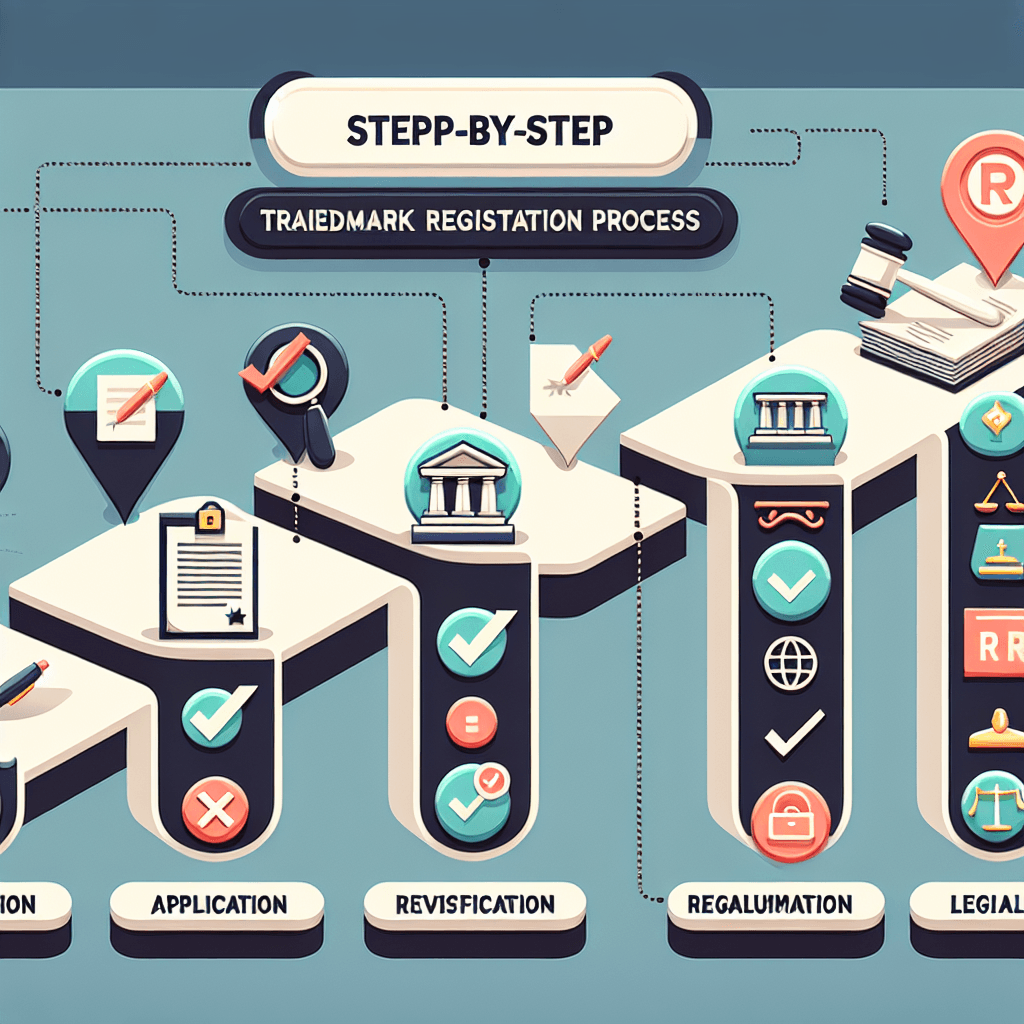Understanding the Importance of Trademarks
In today’s competitive business landscape, protecting your brand identity is paramount. Trademarks serve as powerful tools to differentiate your products and services from others in the market. They encompass everything from logos and slogans to brand names and more. In this article, we will guide you through the step-by-step process of trademark registration, ensuring that you have all the knowledge required to secure your intellectual property rights effectively.
Step 1: Conducting a Trademark Search
Before diving into the registration process, the first step is to conduct a thorough trademark search. This crucial action helps you determine if your desired mark or name is already in use. A preliminary search can be conducted using online databases such as the U.S. Patent and Trademark Office (USPTO) Trademark Electronic Search System (TESS). This step minimizes the risk of potential legal conflicts in the future and saves you time and resources.
Step 2: Identify the Appropriate Trademark Class
Trademarks are categorized into various classes based on the type of goods or services offered. Understanding these classes is essential as it determines the scope of your trademark protection. The International Nice Classification system outlines 45 different classes. Carefully select the class that accurately represents your goods or services to ensure comprehensive coverage.
Step 3: Determine the Basis for Filing
When filing for a trademark in the U.S., you must identify the basis on which you are seeking registration. There are two primary bases: "use in commerce" and "intent to use." If you are already using your trademark in business, you can file under "use." Conversely, if you plan to use the trademark in the future, opt for "intent to use." This distinction is crucial for the registration process.
Step 4: Prepare Your Application
Once you understand the need for a trademark search, class classifications, and basis for filing, it’s time to prepare your application. The application requires detailed information, including:
- The name and address of the applicant
- A clear drawing of the trademark
- A description of the goods and services
- The class number
- The date of first use (if applicable)
Ensure that your application is accurate and complete to avoid delays or potential refusals.
Step 5: File Your Application
With your application prepared, it’s time to file it with the appropriate trademark office. In the United States, this means submitting your application to the USPTO. Ensure you pay the required filing fee, which varies depending on the number of classes you are registering under. E-filing is typically recommended due to its efficiency.
Step 6: Examination by the Trademark Office
After filing, your trademark application will undergo a thorough examination process by an examining attorney at the trademark office. This examination typically takes several months. The attorney will review your application to ensure compliance with legal standards and verify that it does not conflict with existing trademarks.
Step 7: Responding to Office Actions
In some cases, the examining attorney may issue an Office Action, requesting additional information or highlighting potential issues with your application. It is vital to respond to these actions promptly, as failure to do so may result in application abandonment. Ensure your responses are clear, well-documented, and address the concerns raised.
Step 8: Publication for Opposition
Once your application clears the examination phase, it will be published in the Official Gazette. This publication allows third parties to review your trademark and file oppositions if they believe your mark conflicts with theirs. You will have a window of 30 days to address any opposition claims that may arise.
Step 9: Registration Certificate Issuance
If no oppositions are filed, or if you successfully overcome any opposition, the trademark office will issue a registration certificate. This official document signifies your ownership of the trademark and provides legal protection against potential infringement.
Step 10: Maintaining Your Trademark
Obtaining your trademark registration is not the end of the road. You must actively maintain your trademark to retain its protections. This includes:
- Filing declarations of continued use after five years of registration
- Renewing your registration every 10 years
Failure to maintain your trademark rights can lead to cancellation, so ensure you remain vigilant.
Common Trademark Registration Mistakes to Avoid
As you navigate through the trademark registration process, it’s essential to be aware of common pitfalls. These can include:
- Incomplete Applications: Always double-check your application for completeness.
- Vague Descriptions: Clearly define the goods or services connected to your trademark.
- Ignoring Deadlines: Be mindful of filing deadlines and renewal dates.
- Lack of Monitoring: Monitor the market for potential infringements of your trademark.
Avoid these mistakes to streamline your trademark registration journey.
The Role of Trademark Attorneys
While it’s possible to handle the trademark registration process independently, consulting with a trademark attorney can be advantageous. An experienced attorney can provide valuable insights, help navigate complexities, and ensure that your application is as robust as possible. Their expertise can save you time and potential challenges in the long run.
Conclusion: Securing Your Brand’s Future
The trademark registration process is a vital step in protecting your business’s identity and ensuring legal security in the marketplace. By following this step-by-step guide, you can navigate the registration process with confidence, safeguarding your brand against potential infringement. Remember, a well-protected trademark is an essential asset that contributes to your brand’s success and longevity in the fast-paced world of business.








